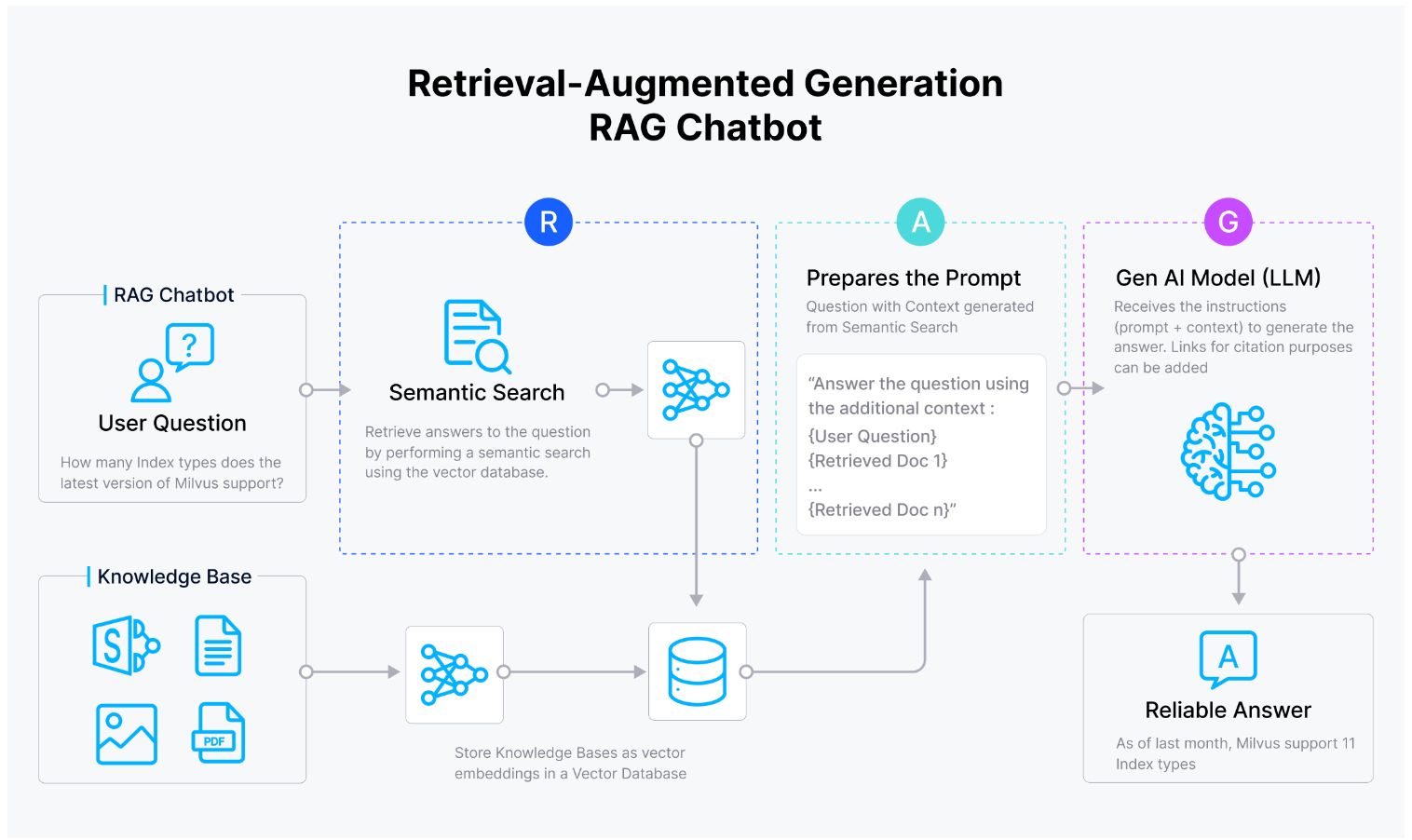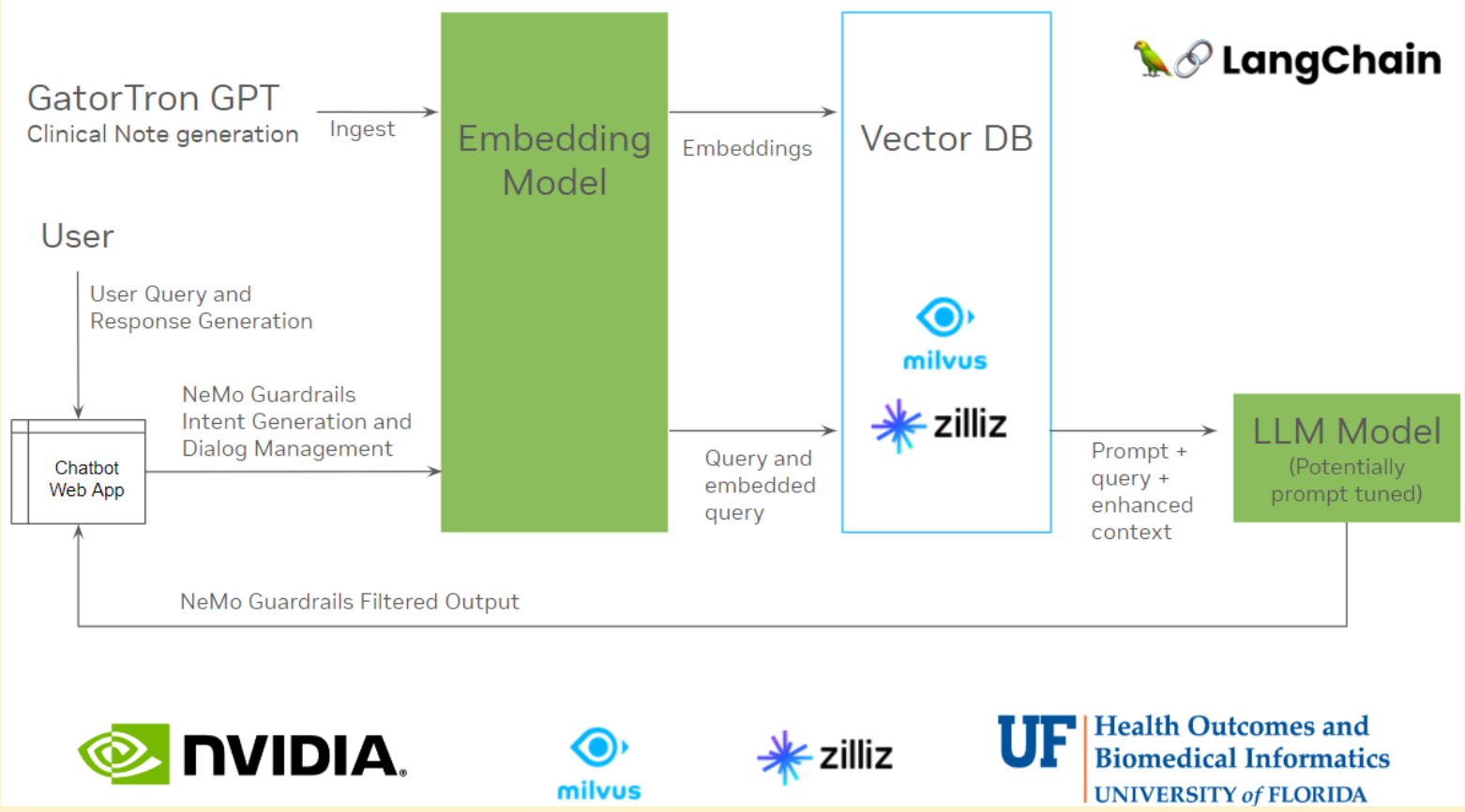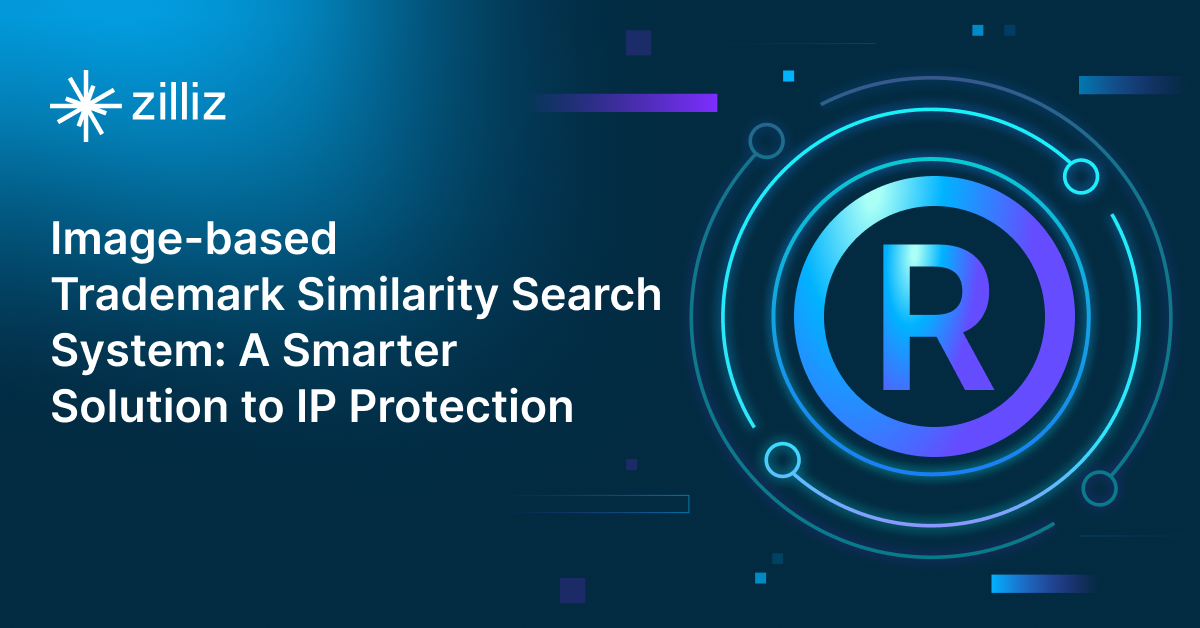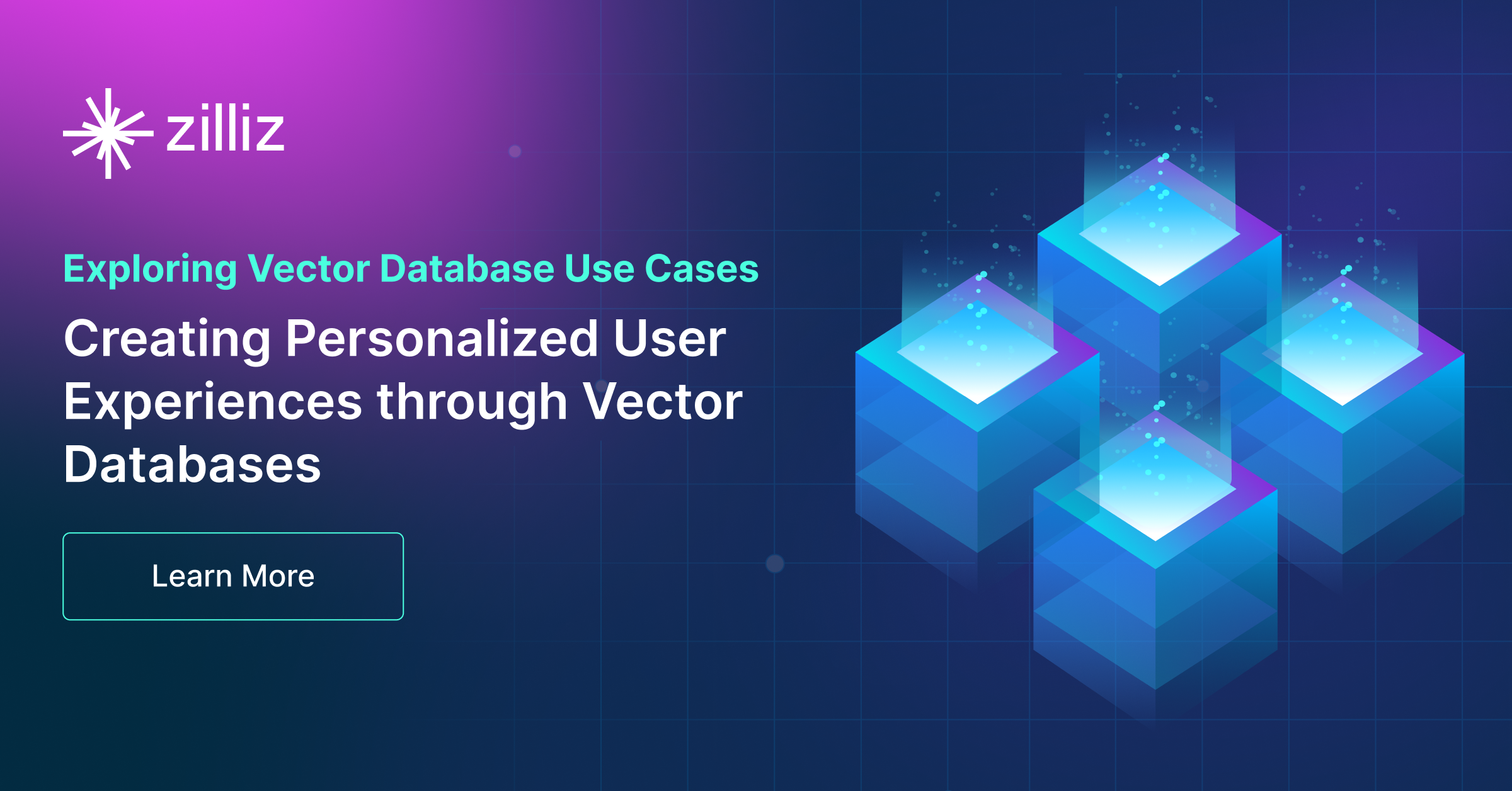Transforming Healthcare: The Role of Vector Databases in Patient Care
Explore how vector databases can play a critical role in transforming patience care in healthcare settings.
Read the entire series
- Image-based Trademark Similarity Search System: A Smarter Solution to IP Protection
- HM-ANN Efficient Billion-Point Nearest Neighbor Search on Heterogeneous Memory
- How to Make Your Wardrobe Sustainable with Vector Similarity Search
- Proximity Graph-based Approximate Nearest Neighbor Search
- How to Make Online Shopping More Intelligent with Image Similarity Search?
- An Intelligent Similarity Search System for Graphical Designers
- How to Best Fit Filtering into Vector Similarity Search?
- Building an Intelligent Video Deduplication System Powered by Vector Similarity Search
- Powering Semantic Similarity Search in Computer Vision with State of the Art Embeddings
- Supercharged Semantic Similarity Search in Production
- Accelerating Similarity Search on Really Big Data with Vector Indexing (Part II)
- Understanding Neural Network Embeddings
- Making Machine Learning More Accessible for Application Developers
- Building Interactive AI Chatbots with Vector Databases
- The 2024 Playbook: Top Use Cases for Vector Search
- Leveraging Vector Databases for Enhanced Competitive Intelligence
- Revolutionizing IoT Analytics and Device Data with Vector Databases
- Everything You Need to Know About Recommendation Systems and Using Them with Vector Database Technology
- Building Scalable AI with Vector Databases: A 2024 Strategy
- Enhancing App Functionality: Optimizing Search with Vector Databases
- Applying Vector Databases in Finance for Risk and Fraud Analysis
- Enhancing Customer Experience with Vector Databases: A Strategic Approach
- Transforming PDFs into Insights: Vectorizing and Ingesting with Zilliz Cloud Pipelines
- Safeguarding Data: Security and Privacy in Vector Database Systems
- Integrating Vector Databases with Existing IT Infrastructure
- Transforming Healthcare: The Role of Vector Databases in Patient Care
- Creating Personalized User Experiences through Vector Databases
- The Role of Vector Databases in Predictive Analytics
- Unlocking Content Discovery Potential with Vector Databases
- Leveraging Vector Databases for Next-Level E-Commerce Personalization
- Mastering Text Similarity Search with Vectors in Zilliz Cloud
- Enhancing Customer Experience with Vector Databases: A Strategic Approach
Introduction
Imagine having a digital assistant that can intelligently navigate through the vast labyrinth of patient data, swiftly retrieving and surfacing crucial information for clinicians. This "Clinician AI Companion" could revolutionize how healthcare professionals prepare for patient consultations, streamlining the process of gathering and synthesizing medical histories, test results, diagnoses, and more.
At its core, such an application leverages the prowess of large language models (LLMs). With their ability to understand and generate human-like text, LLMs can extract, summarize, and distill complex patient records into concise, actionable insights. This companion empowers clinicians to grasp the most pertinent details quickly, even with limited preparation time before meetings.
However, the immense potential of LLM-based assistants is counterbalanced by valid concerns over AI hallucinations introducing erroneous information and the risk of inadvertently exposing sensitive patient health information (PHI). This is where cutting-edge vector databases and the Retrieval-Augmented Generation (RAG) framework come to the rescue.
This advanced framework leverages the capabilities of LLMs while addressing their limitations, ensuring the virtual assistant remains rooted in factual data and adheres to strict privacy protocols.
Understanding Vector Databases
At the heart of this cutting-edge clinical assistant lies a robust data storage and retrieval system known as a vector database. Unlike traditional databases that store data in rows and columns, vector databases are designed to handle high-dimensional data, such as medical images, text embeddings, and other complex data types. These databases quickly find similarities and patterns within vast troves of multidimensional information.
Vector databases achieve this by representing data as dense vectors or points in a high-dimensional space. Specialized search libraries, like FAISS, ScaNN, hierarchical navigable small world (HNSW) graphs or CAGRA, are then used to efficiently index and search through these vector representations. This specialization allows for lightning-fast similarity searches, where the database can quickly surface the most relevant medical records, test results, or images based on their vector representations' proximity to a query vector. By harnessing the power of vector databases, the clinical assistant can swiftly retrieve and synthesize crucial patient information from diverse data sources, empowering healthcare professionals with timely, comprehensive insights.
Advancements in Patient Care with Vector Databases
Personalized Treatment Plans
These databases enable professionals to analyze vast amounts of information quickly and accurately, matching patients with the most effective treatments based on their profiles. Using similarity search capabilities, vector databases can compare patient profiles with large datasets to identify potential health risks and recommend treatment methods.
Improved Diagnostic Accuracy
Vector databases excel at handling image data, including imaging data, providing the ability to detect patterns and anomalies in patient data that may indicate the presence of disease. Their ability to perform similarity searches across medical databases also helps compare patient symptoms and test results with known cases, improving the accuracy of diagnostics, therefore reducing diagnostic errors and ensuring patients receive appropriate care.
Faster Patient Data Retrieval
Vector databases excel at handling large multidimensional data. Combined with approximate search and indexing capabilities, vector databases can perform search and data retrieval across big data in real time.
Retrieval Augmented Generation (RAG) in healthcare
Retrieval Augmented Generation (RAG) in healthcare represents an approach to medical data processing and knowledge dissemination. By integrating retrieval mechanisms with generative models, RAG enables healthcare practitioners to synthesize patient-specific insights, treatment options, and medical recommendations by leveraging a vast healthcare data repository. This framework empowers clinicians with tailored, evidence-based guidance, enhancing diagnostic accuracy and treatment efficacy. Moreover, RAG fosters collaborative learning and decision-making among healthcare professionals by providing comprehensive access to pertinent clinical literature and case studies.
 Retrieval Augmented Generation (RAG)
Retrieval Augmented Generation (RAG)
Example Applications in Healthcare
To support the role of Vector databases in Healthcare, we will review two example applications in healthcare from some AI industry stalwarts: NVIDIA and IBM.
NVIDIA and Zilliz Cloud in Healthcare
If you were lucky enough to go to GTC 2024, you could attend the AI Safety Defenders: Reinforcing Medical Boundaries with Guardrails workshop. If not, you can check out the recording. In this joint session with NVIDIA, the University of Florida Health Outcomes and Biomedical Informatics, and Zilliz, students were shown how to build a virtual clinician assistant comprising of the GatorTron GPT (clinical note generation), a NeMo Guardrails server, which intelligently mediates conversations with clinicians, the Zilliz Cloud vector database to store and retrieve the relevant data, and LangChain. These components are tied together to form the entire RAG system, which generates answers based on clinician queries and patient documents.
 Figure 1: Virtual Clinician Assistant RAG Architecture
Figure 1: Virtual Clinician Assistant RAG Architecture
NVIDIA NeMo Guardrails is a system that orchestrates dialog management, ensuring accuracy, appropriateness, and security in applications with large language models. Guardrails allow you to instruct a model to follow specific parameters, such as not discussing certain topics, responding to user requests within predefined boundaries, following a particular dialog path, using a specific language style, or extracting structured data. Guardrails are also programmable and extensible, allowing developers to add unique application and domain-specific features. For example, a hospital system could add its own guardrails, ensuring the safety and security of patient data.
With the critical data converted to vector embeddings and stored in Zilliz Cloud, the RAG system can efficiently retrieve patient information by querying the vector database. It takes the query results and sends a prompt to the LLM to generate accurate answers for the practitioner to use.
In essence, these RAG solutions empower organizations to harness the immense potential of generative AI while minimizing risks and maximizing positive outcomes.
IBM and Milvus in Healthcare
IBM watsonx Assistant is a conversational AI platform that empowers developers to create intelligent virtual assistants for enhancing customer experiences. These assistants leverage your company's proprietary data related to products and customer information, ensuring complete data privacy. By providing comprehensive support, watsonx Assistant boosts productivity and drives better business outcomes.
watsonx harnesses the power of Zilliz Cloud (Managed Milvus) to form the backbone of a Retrieval Augmented Generation (RAG) framework. This synergy not only enables you to combine your confidential data with large language models' advanced language generation capabilities but also ensures its utmost security, delivering a secure and robust solution. Here are some key advantages:
- Efficient Storage and Retrieval: Vector databases efficiently store and retrieve high-dimensional vectors. In the context of watsonx Assistant, where large document collections and embeddings generated by LLMs are common, a vector database can help manage these vectors effectively.
- Fast Similarity Search: Vector databases are optimized for similarity search operations, which are crucial for tasks like semantic document search and retrieval-augmented generation (RAG) pipelines. By indexing vectors and enabling fast similarity search, a vector database can significantly speed up these operations in watsonx Assistant.
- Scalability: As document collections and the number of vectors grow, scalability becomes essential. Vector databases are designed to scale horizontally, allowing watsonx Assistant to effectively handle large-scale deployments and growing data volumes.
- Integration with watsonx AI Services: By utilizing watsonx AI Services, you can convert and store vector embeddings generated from text, audio, or image files into Zilliz Cloud. This multi-modal collection of embeddings can represent customer conversations, screenshots of errors from billing documents reported by customers, pictures of damaged products, etc., and detailed product and sales information commonly used when working with customers. This comprehensive collection of data is what makes customer intimacy possible.
Moreover, watsonx offers a suite of foundation models supporting multiple languages, including Japanese, German, Spanish, French, Portuguese, and more. This ensures that your virtual assistants are not limited by language barriers but are ready to serve your global customer base, ensuring global accessibility.
The Future of Healthcare with Vector Databases
The adoption of vector databases in the healthcare sector has the potential to revolutionize patient care despite being an underutilized technology thus far. However, this landscape is poised for a significant transformation, as vector databases and advancements in artificial intelligence (AI) and machine learning (ML) are promising to drive the healthcare industry toward a more personalized, efficient, and data-driven future.
Vector databases store and process high-dimensional data, such as medical images, genomic data, and patient records, enabling efficient similarity searching and retrieval. This capability can facilitate accurate diagnosis and treatment recommendations by quickly identifying relevant medical cases and research studies based on complex data patterns.
Moreover, integrating vector databases with AI and ML models can unlock new avenues for personalized medicine. By analyzing vast amounts of patient data, including medical histories, genetic profiles, and lifestyle factors, these systems can identify intricate patterns and provide tailored treatment plans, optimizing outcomes and minimizing adverse effects. Furthermore, vector databases' scalability and distributed architecture make them well-suited to handle the ever-growing volume of healthcare data. As more wearable devices, electronic health records, and medical imaging techniques generate massive amounts of data, vector databases can efficiently store and process this information, enabling real-time analysis and decision-making.
As the healthcare industry continues to embrace digital transformation, vector databases will play a pivotal role in harnessing the power of data and AI to improve patient care, reduce costs, and drive medical research forward. The future of healthcare lies in leveraging these technologies to unlock insights hidden within complex data, ultimately leading to better health outcomes and a more sustainable healthcare system.
- Introduction
- Understanding Vector Databases
- Advancements in Patient Care with Vector Databases
- Retrieval Augmented Generation (RAG) in healthcare
- Example Applications in Healthcare
- The Future of Healthcare with Vector Databases
Content
Start Free, Scale Easily
Try the fully-managed vector database built for your GenAI applications.
Try Zilliz Cloud for FreeKeep Reading

Image-based Trademark Similarity Search System: A Smarter Solution to IP Protection
Learn how to use a vector database to build your own trademark image similarity search system that could save you from intellectual property lawsuits.

How to Make Online Shopping More Intelligent with Image Similarity Search?
Learn how to build an intelligent image similarity search system for online shopping using a vector database.

Creating Personalized User Experiences through Vector Databases
Explore how vector databases enhance personalized user experiences
